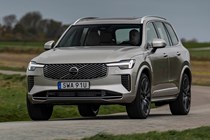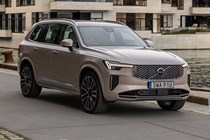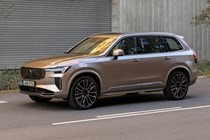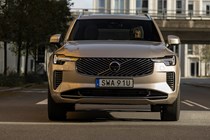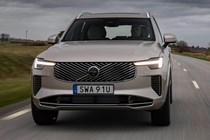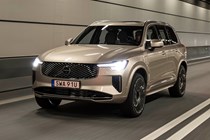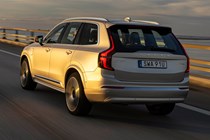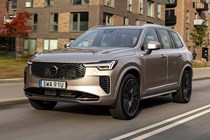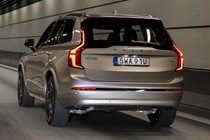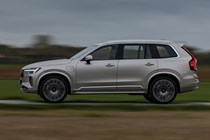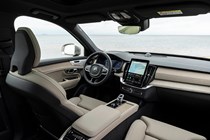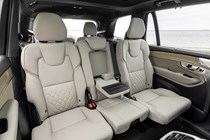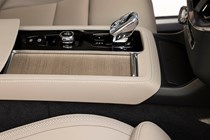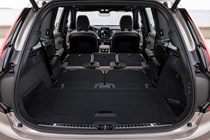
Volvo XC90 engines, drive and performance
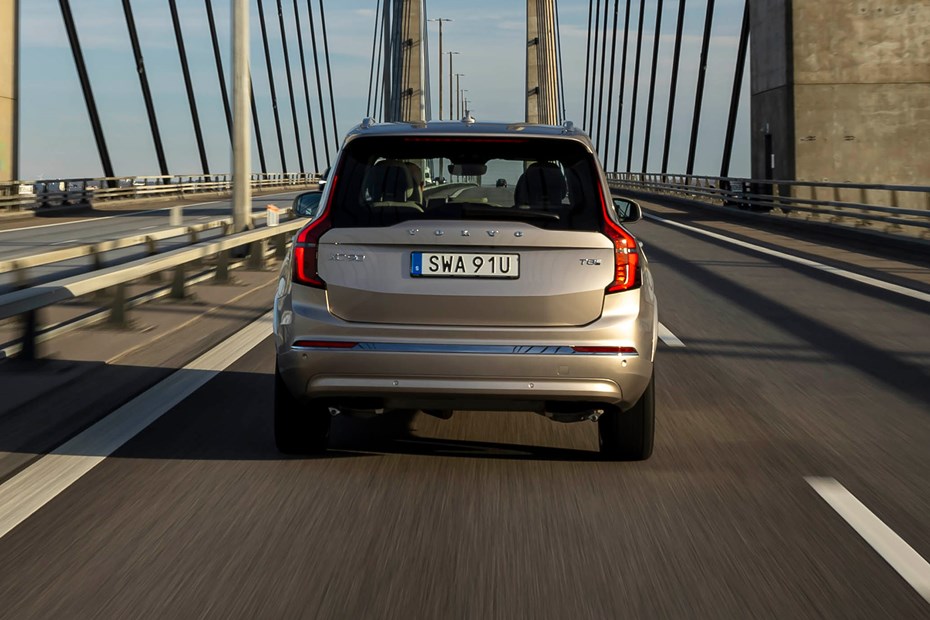
- Two engine options for the XC90
- Two petrol hybrids – one mild, one plug in
- Plenty of other engines on used market
What engine options are there?
The XC90 was once offered in a wide range of engine configurations, but it’s now been whittled down to just two, and they’re both hybrid petrols. The B5 is the entry-level mild hybrid. It produces 250hp and 360Nm of torque, for a 0-62mph time of 7.7 seconds. If you fancy a little more shove – we say a little, but we really mean a lot – the only other option is the T8 plug-in hybrid engine.
This variant produces a mighty 455hp with both its petrol engine and its electric motor engaged, along with a combined 709Nm of torque. Unsurprisingly, with all that torque, its acceleration stats are something to behold: 0-62mph in 5.4 seconds. Both engine options have a top speed of 112mph.

On the road, the cocktail of high-tech petrol engine (supercharged and turbocharged and electric motor delivers quite a punch. The combined power can be applied all at once using the car’s Power mode, enabling it to keep pace with many smaller and lighter hot-hatches.
Frankly, that level of pace is amazing for a car of this size, and it feels as quick too. Put your foot down from a standstill and it rockets away with a feeling of urgent acceleration you simply don’t get from conventional powertrains. The instant torque available via the electric motor is to thank for that.
It’s not all about speed, though. One of the main advantages of a hybrid car is that it’s also smooth around town and cheap to run. The former aspect is best felt in Hybrid mode, which swaps between petrol and electric power automatically and almost seamlessly – based on what you demand of the car.
If you really concentrate you can just about tell where the change happens, but only just. In the main it’s just an easy car to drive. Stick it in D and away you go, and the car will work out the most efficient way of driving. It’ll default to Hybrid mode as much as possible, with around 45 miles of electric-only travel possible in the 2024 cars, but this will most likely happen around town with a light right foot. In reality, you’ll get closer to 20 miles on the battery.
There are a few other driving modes available, including Pure – which maintains electric power for as long as possible until the battery runs out and the petrol engine must kick in – and Save, which stops electric power to prevent you using it all up at motorway speeds so you can “save” your emissions-free motoring for city centres. It’s all very Greenpeace.
Handling
- The XC90 is a large, heavy car
- Handles its size fairly well
- Best as a relaxed cruiser, though
This isn’t a car for flinging around corners. There’s a fair bit of bodyroll, while sharper corners can cause this boxy SUV to feel a little top-heavy, but this is a direct result of how comfortable the car is. With that said, it’s a very easy car to drive, and the purpose of the XC90 is to provide comfortable family transport – not to thrill like a supercar.
All XC90s are AWD (all-wheel drive) and deliver power to all four wheels. All of this electronic wizardry is controlled through an eight-speed automatic gearbox which works absolutely faultlessly. It’s smooth and the electrical assistance helps the XC90 respond better than many rivals from stationary.

Its steering isn’t particularly communicative but it is direct and accurate, which means the car feels faithful to your inputs and goes where you expect it to – it’s just not as responsive out of town like a BMW X5 is. It’s quite light too, which further helps with ease of driving around town.
Because of the sheer size of the car it can be difficult to manoeuvre in tight spaces, but thanks to systems such as parking sensors and all-round cameras or even automatic parking, there’s always a way around it to help with visibility. The XC90 makes a great tow car too, with a braked towing weight of 2,950kg for the T8 and 2,790kg for the B5 petrol.
It might look like an off-roader, but we’re not entirely convinced the XC90 will work particularly well when the going gets tough. Most buyers won’t dream of taking theirs off the beaten track anyway, so perhaps this isn’t a huge issue, but we’d like the opportunity to see what it can do regardless. Some of its rivals excel in this regard.


